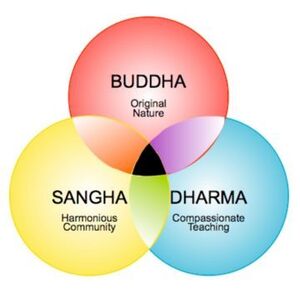Topic of the Week: Explaining the term Three Jewels
The Three Jewels form one of the fundamental concepts in Buddhism. The Buddha as the teacher, his teachings, or the Dharma, as the path, and his followers, or Sangha, as the companion are known as triratna in Sanskrit, triratana in Pali, and könchosum (དཀོན་མཆོག་གསུམ་, Wyl. dkon mchog gsum) in Tibetan. The Sanskrit term ratna and Pali ratana means jewel, gem, or treasure. The Tibetan word köncho literally means rare and supreme. Why are the Buddha, his teachings, and his followers considered to be jewels or to be rare and supreme? What is the reason behind the term Three Jewels or Triple Gem?
The Ratnagotravibhāga, which is a treatise on the spiritual gene of the Three Jewels, states in Verse l.22 that they are considered jewels or gems because they are rare, stainless, powerful, supreme, immutable, and ornaments of the world. Find more translations and explanations of this verse here.
Weekly quote
The Buddha's teaching on the fundamental nature of the human mind has always been a great source of inspiration and hope for me.~ The 14th Dalai Lama Tenzin Gyatso

